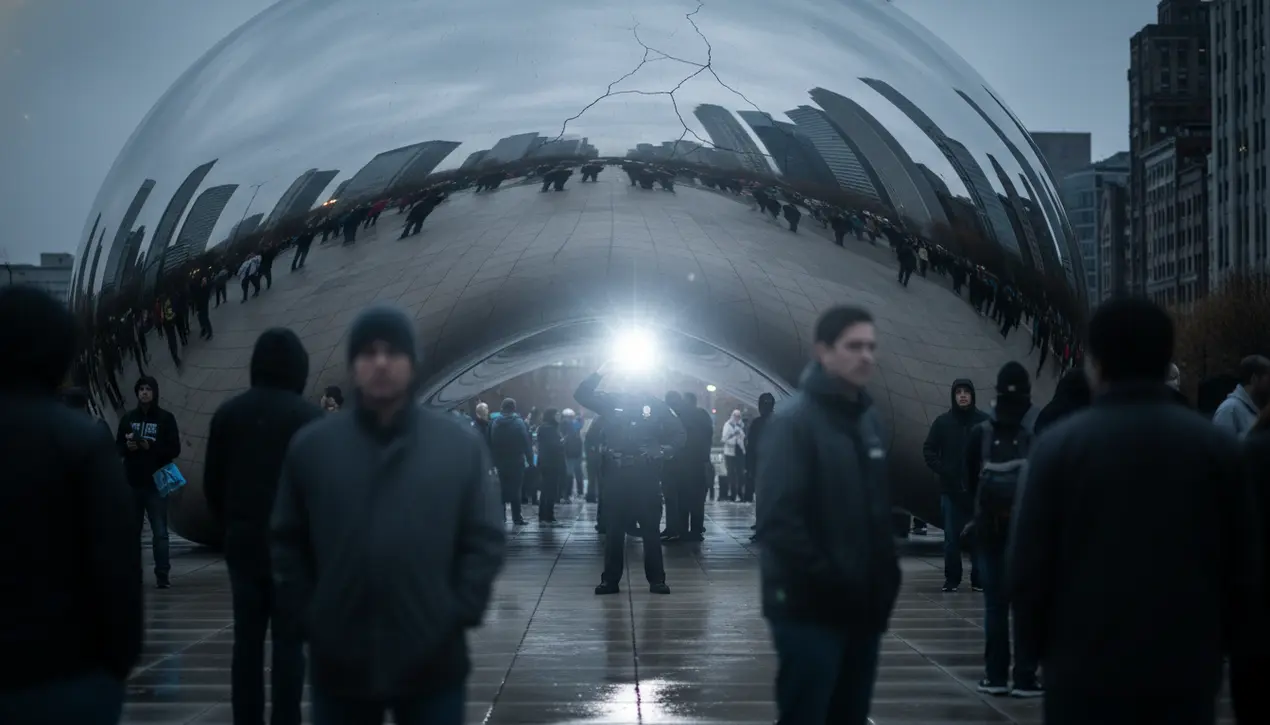
Entertainmenttheatre & artsArt Exhibitions
Anish Kapoor Objects to Border Patrol Photo at Chicago Bean.
AM
Amanda Lewis
6 hours ago7 min read4 comments
The gleaming, liquid-mercury surface of Anish Kapoor’s Cloud Gate—affectionately known to Chicagoans and the world as 'The Bean'—has long been more than just a sculpture; it’s a civic mirror, a tourist magnet, and a stage for the unscripted theater of public life. But a recent photograph, snapped by a uniformed U.S. Border Patrol agent posing triumphantly before its curved facade, has ruptured that artistic contract, prompting the British artist to declare himself 'horrified' and threatening legal action for what he perceives as a profound misuse of his creation.This isn't merely a dispute over a photo op; it’s a dramatic collision of art, politics, and public space, echoing controversies that have dogged Kapoor throughout his career. The very essence of Cloud Gate is its democratic invitation—its seamless, distorted reflection captures everyone, from toddlers to grandparents, in a shared, warped reality.The insertion of a federal law enforcement agency, particularly one as politically charged as Border Patrol in the current American climate, into this communal tableau is being framed by Kapoor’s camp as a coercive act, a hijacking of the sculpture’s benign, unifying symbolism for a divisive institutional message. It’s a scenario ripe for cinematic symbolism, reminiscent of a villain’s monologue delivered to their own reflection, and it raises thorny, unresolved questions about an artist’s moral rights after a work is sold and installed in the public realm.While the City of Chicago owns the sculpture and its associated plaza, Kapoor retains the copyright, a legal distinction that becomes a weapon in battles over reproduction and, arguably, context. This incident recalls his fierce, ongoing feud with Stuart Semple over the use of Vantablack, illustrating an artist fiercely protective of his legacy and the perceived purity of his work’s intent.One must ask: where does public art end and public domain begin? Can an artist, even one of Kapoor’s stature, dictate the narrative that unfolds in front of their work, especially when that work is funded by public dollars and exists to be interacted with? The Border Patrol, for its part, likely saw only a iconic backdrop, a trophy in the visual economy of institutional pride. Yet, for countless observers, the image is a stark, unsettling juxtaposition—the hopeful, open reflection of the city against an agency whose actions are frequently criticized for their harshness and exclusivity.The legal path is murky; 'moral rights' or 'droit moral' under U. S.law are weaker than in Europe, but a case could potentially be built on a distortion of the work’s integrity or a violation of terms in the original acquisition agreement. Beyond the courtroom, the controversy serves as a potent critique of our era, where imagery is weaponized and every public square is a potential propaganda platform. The Bean, designed to reflect the sky and the people, now finds itself reflecting a nation’s deep political fractures, and Kapoor’s outrage is a powerful reminder that art is never truly neutral, and the stories told in its shadow are part of its enduring, and often contested, legacy.
#Anish Kapoor
#Cloud Gate
#The Bean
#Chicago
#US Border Patrol
#photo-op
#legal action
#controversy
#featured
Stay Informed. Act Smarter.
Get weekly highlights, major headlines, and expert insights — then put your knowledge to work in our live prediction markets.
Comments
Loading comments...
© 2025 Outpoll Service LTD. All rights reserved.